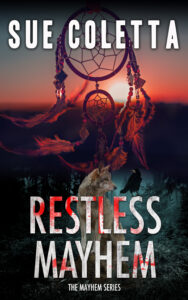The conversation about critical distance doesn’t come up often in writing circles. If someone does raise the point, critical distance is usually mentioned in passing as though other writers should inherently know what it is and why it’s important. Let’s change that today.
What is Critical Distance?
The phrase stems from researchers who lost all subjectivity in their analysis. To regain clarity (critical thinking), they had to step away from the project for a while.
Practitioner researchers have often been criticised for a lack of critical distance from their work often leading to conclusions which can be, in the field of objective research, critiqued for a lack of creditability and validity (Saunders, 2007). Also inherent in this type of research is the fact that the types of practitioners who come to this kind of research often have been thinking about the research topic for several years bringing with them a host of assumptions and ideas of what they want to find out and usually already having a theoretical stance for the project (Drake and Heath, 2011; Wellington and Sikes, 2006).
—Michelle M. Appleby, University of Derby
- Surgeons aren’t allowed to operate on family members.
- Cops aren’t allowed to investigate a family member’s murder.
- Judges aren’t allowed to preside over a loved one’s case.
These rules are in place because the surgeon, cop, and judge cannot be objective if a personal connection exists.
What’s more personal than writing?
While drafting, we wear love goggles. We’re so wrapped up in our characters, we lose all objectivity. It’s only after we’ve gained distance that we can view the story through the proper lens. Also, we may miss plot holes or leave threads dangling while drafting.
I’ll give you an example…
When I wrote the first draft of Restless Mayhem, one of my anti-heroes mentioned two characters from a previous book. I’d originally planned to have these two characters play a critical role in the story, but then the plot twisted and turned and my original plan changed. Well, I forgot to change the conversation at the beginning of the book. Even though I read the manuscript a few times, I still missed it. After I set it aside for a month, those two names popped right out. And I thought, gee, why are they there?
At that point, I couldn’t recall what my characters did with that information, so I left myself a note and continued on. Guess what? No one ever mentioned those two names again. Never. Whoops! I ended up changing the names to two characters who did play a vital role in the plot. But what if I hadn’t set the manuscript aside? I’d have a lot of confused readers.
Does your character have an accent in chapter two that disappears in chapter twenty?
Does someone have green eyes that turn brown by the end of the book?
Did you name the cat Henry and then change it to Harry?
Did your character have a left arm injury that moved to the right?
Even though most of the above you’ll include in your story bible—you made one, right?—we can still miss seemingly insignificant details if we forego the critical distance stage. I know you’re excited to release your new book baby, but that puppy will shine even more if you allow it to sit a while. I’m amazed by what I find once I return to the manuscript.
How can we view our creations through an objective lens?
After you’ve written the first draft, set it aside for x-amount of weeks. The length of a break varies between writers. For some, two or three weeks may be enough. Others may need a month or more. There’s no right or wrong answer here. Whenever you’ve gained enough distance that you don’t recall every scene. The best way to do that is by working on a different project while the draft cools.
Benefits of critical distance…
- Easily fix writing tics.
- Catch typos and grammatical errors.
- Seal plot holes.
- Tie-up dangling threads.
- Swap weak verbs for strong ones.
- Correct passive voice.
- Fix clunky words, awkward sentences, and/or phrases.
- Deepen characterization.
- Better ground the reader in the setting.
- Strengthen your theme.
- Make your writing more expressive.
- Paint a more vivid mental picture.
- Infuse more emotion.
- Change body cues (1st drafts often include obvious or less-than ideal body movements).
- Convey emotion better.
- Rewrite to remove some dialogue tags.
Do you let the manuscript rest once you complete the first draft? How long do you let it sit?
 Amidst a rising tide of poachers, three unlikely eco-warriors take a stand to save endangered Eastern Gray Wolves—even if it means the slow slaughter of their captors.
Amidst a rising tide of poachers, three unlikely eco-warriors take a stand to save endangered Eastern Gray Wolves—even if it means the slow slaughter of their captors.
*Please note: 99c sale is only available on Amazon.
Restless Mayhem releases in ebook and paperback on April 26, 2023. Can’t wait!
